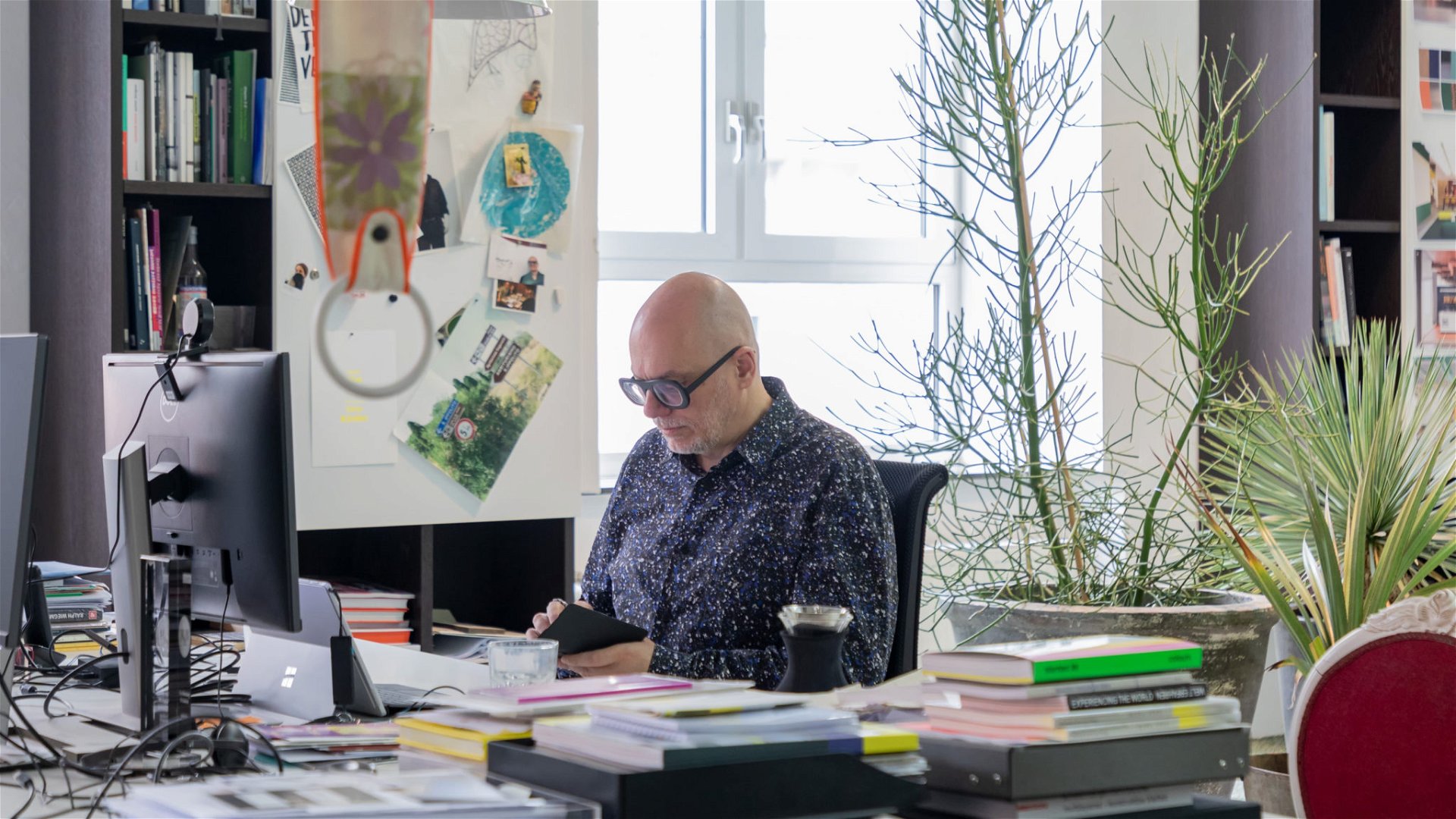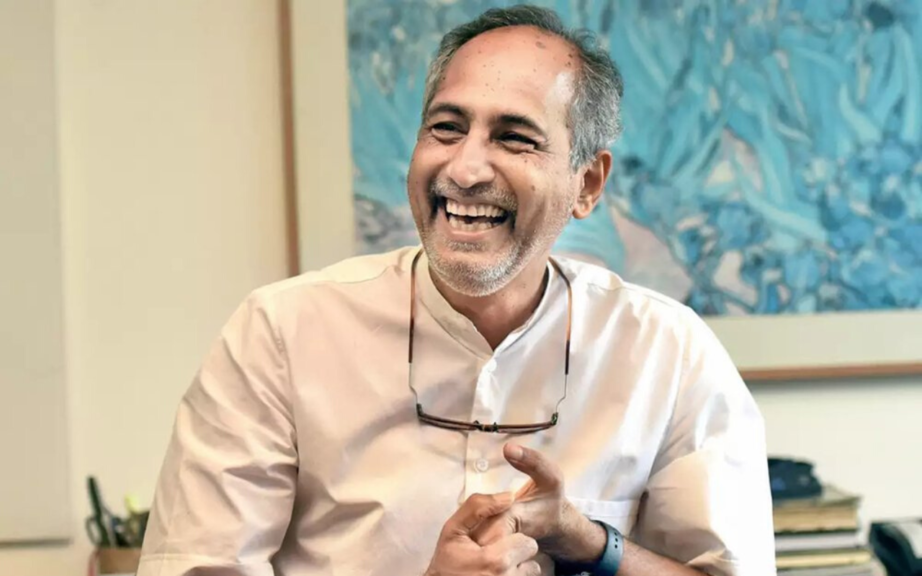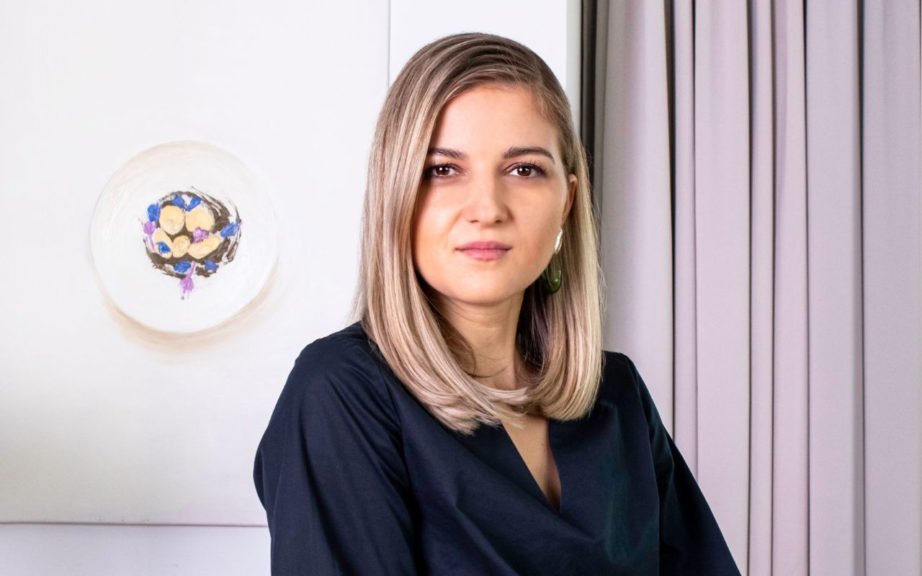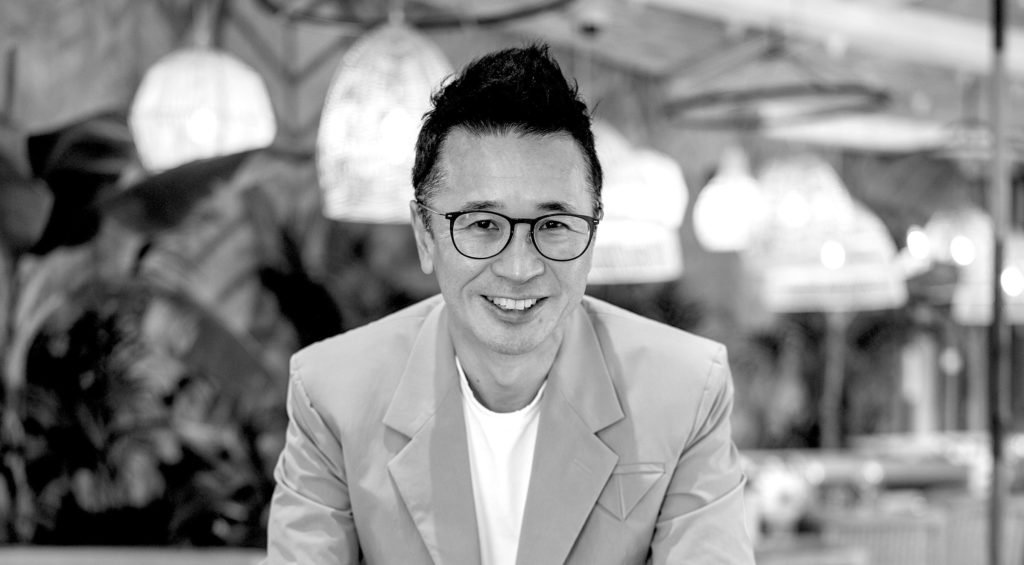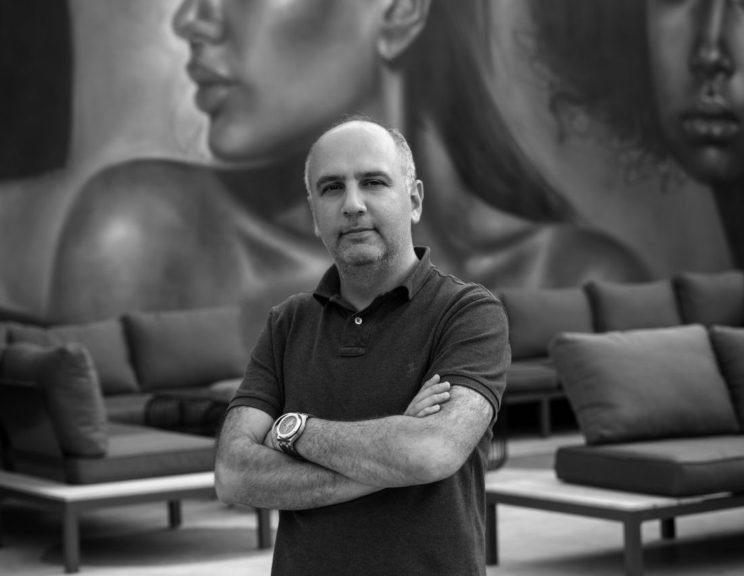“What am I going to do with my life?”, was a question that bewildered Peter Ippolito well into adolescence. He was in the midst of an adventurous backpacking (read: a run-away) trip through Paris, when it dawned upon him—he wanted to be an architect. Sitting on a weathered park bench in Paris, his fingers clung tightly to his trusty sketchbook and since then, he never looked back.
That reflective pause on the park bench marked the beginning of Peter’s ability to trust his instincts and read between the lines, a recurring theme that would later define his illustrious career—one adorned with over 400 accolades and the unique distinction of being the sole German Interior Design Firm inducted into the Hall of Fame in New York.
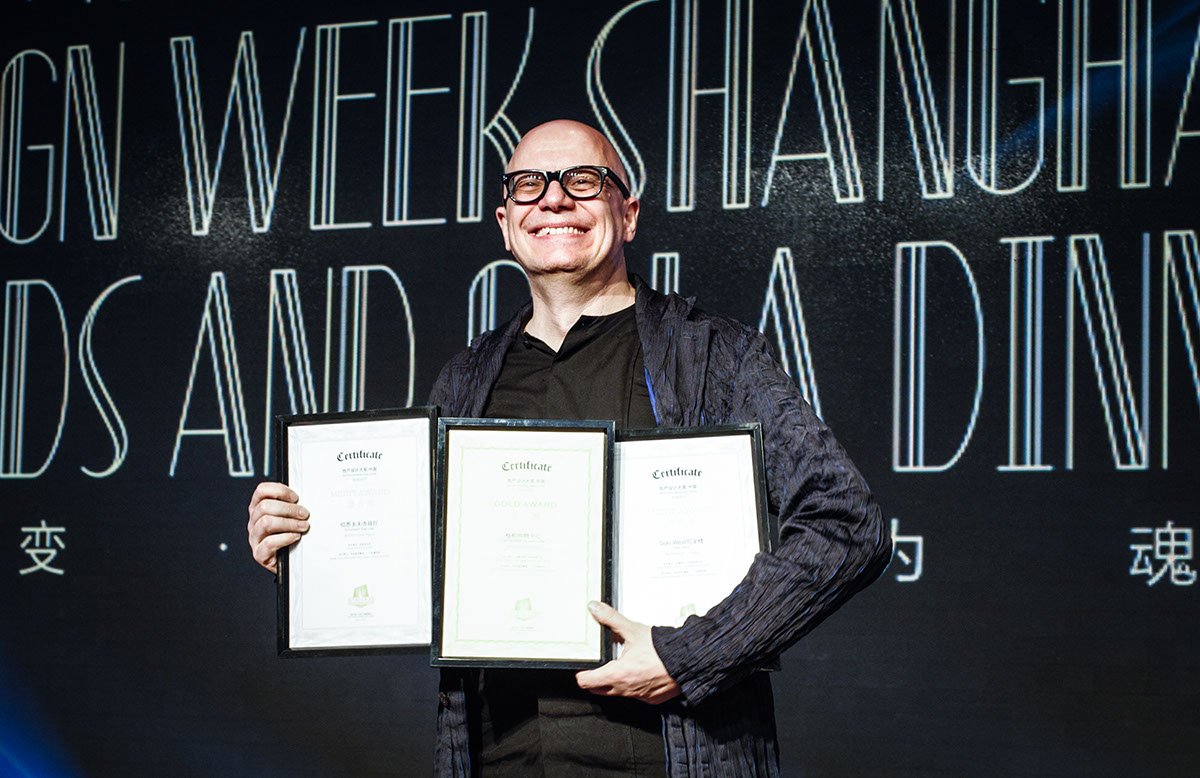
Three Decades of Design: The Peter and Gunter Fleitz Partnership
The story of Peter and Gunter Fleitz’s partnership began as flatmates, when they attended different architectural schools in Stuttgart. The duo co-founded the Ippolito Fleitz Group in 2002. Regarding their roles within the firm, Peter describes it as a good energy mix. “There is no formal division of responsibilities. However, one of our studio directors mentioned a couple of weeks ago that I am the guy who charges forward, and Gunter holds things together,” he laughs.
Despite the occasional difference of opinions, the strength of this Yin-Yang partnership lies in their shared passion for developing strong concepts and commitment to creating value beyond aesthetics. Five international studios and two decades of experience spanning various architectural typologies worldwide is proof enough.
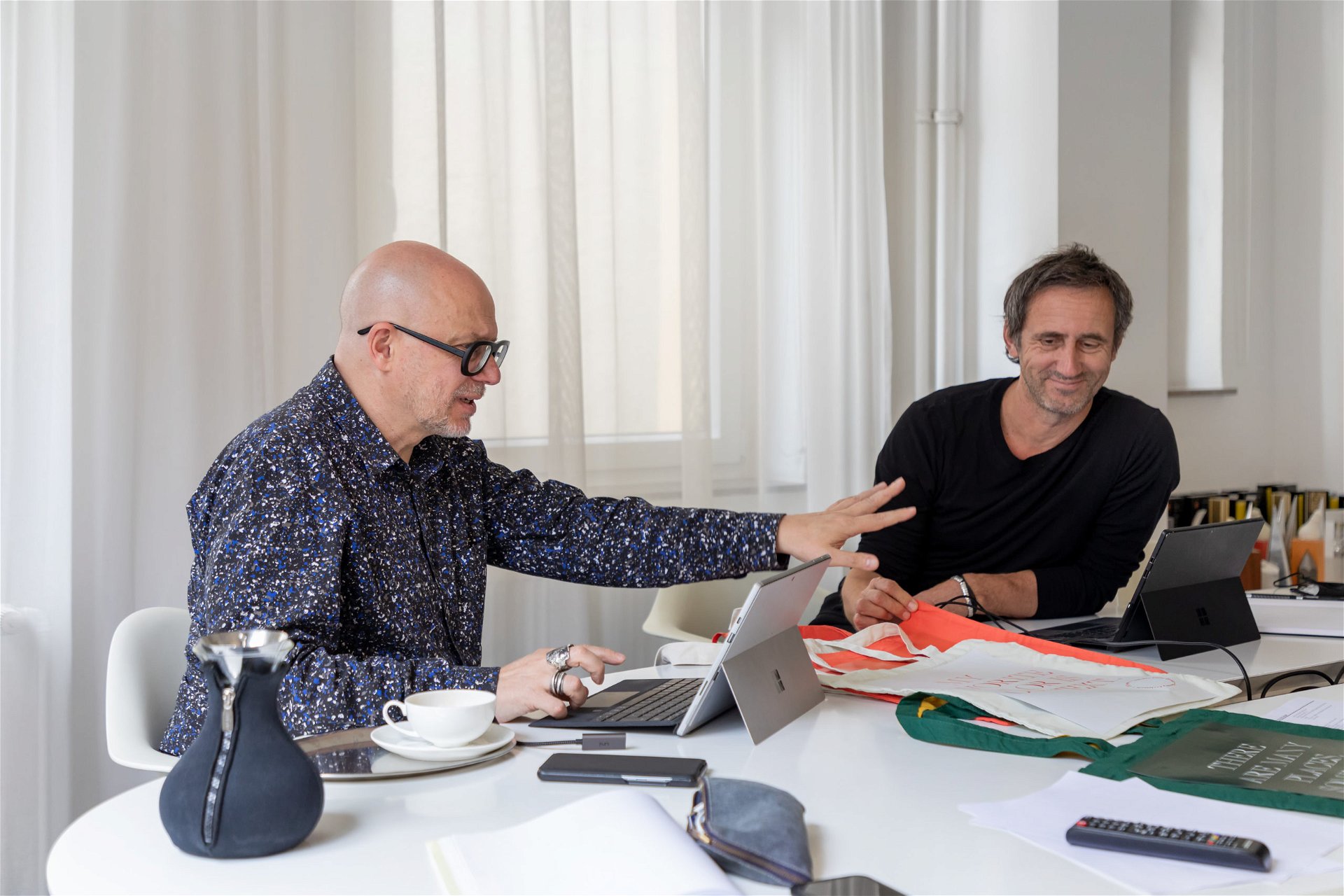
Photography Credits: Marc Goodwin
“There is no formal division of responsibilities. However, one of our studio directors mentioned a couple of weeks ago that I am the guy who charges forward, and Gunter holds things together.“
– Peter Ippolito, Managing Partner, Ippolito Fleitz Group
Curating The Identity Of A Country: The Uzbekistan Palace Of International Forums & Establishing an International Prowess
Peter holds a refreshingly optimistic outlook on his career, one devoid of resentment and focused only on the future. He advises, “Don’t overthink strategies; just stay excited about your work. Putting energy into the market was the magic behind our early successes.”
While acknowledging the several significant project milestones that reshaped their career trajectory, one example stands out—the interior architecture of the Uzbekistan Palace of International Forums in the heart of Tashkent. This monumental project—serving as one of the country’s most important representative buildings and hosting state events, congresses, conferences, and cultural highlights—presented a formidable challenge.
With just five and a half months on the clock, in a brand new country, and with approximately 5,000 workers, the high-end, 43,000-square-metre structure led to several sleepless nights for Ippolito Fleitz Group. However, the realisation of being Identity Architects, not only for their clients, but for an entire nation, still lights up Peter’s face.
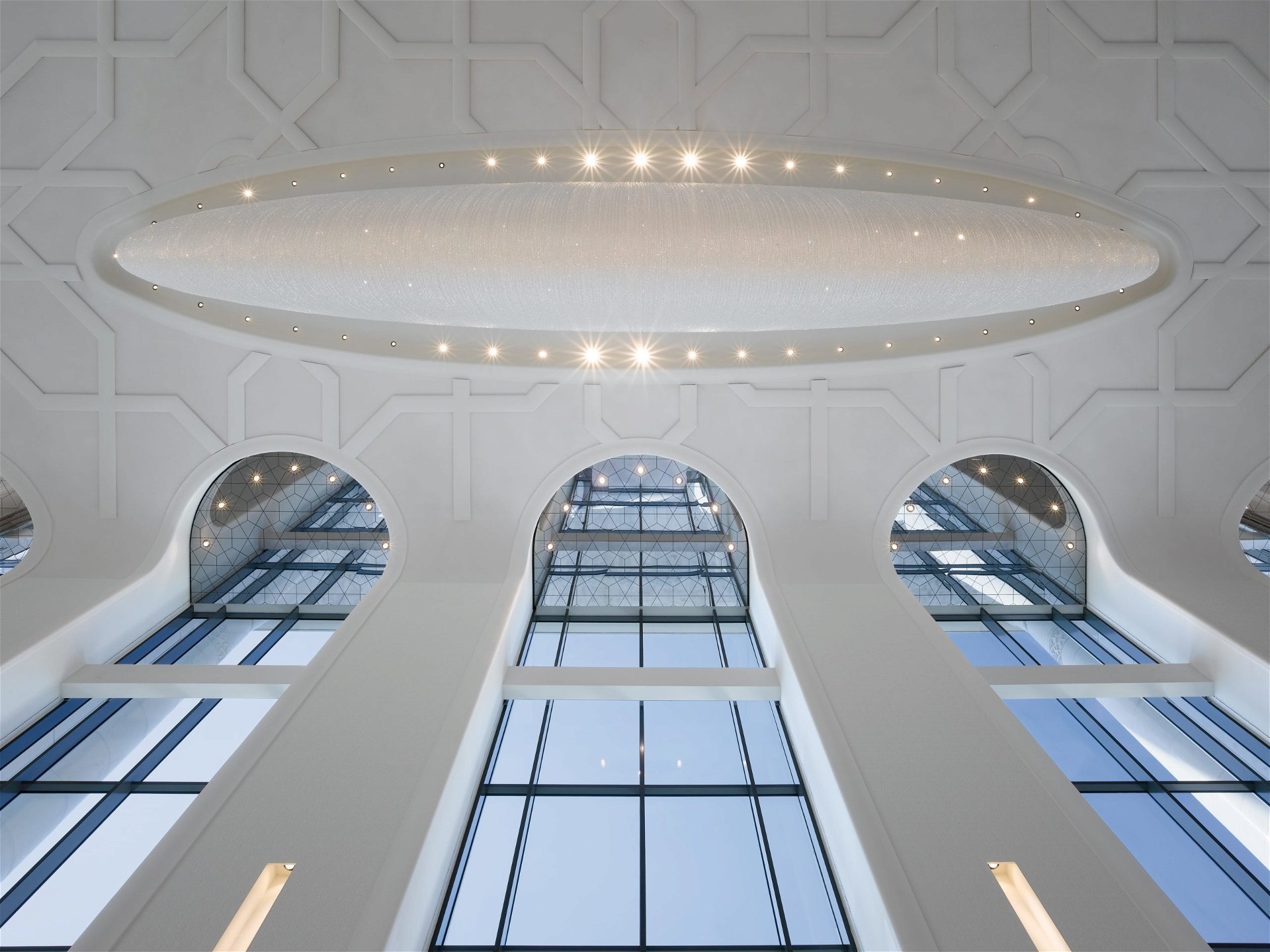
Uzbekistan Palace of International Forums; Photography Credits: Zooey Braun
When quizzed about how he landed the project, Peter chuckles before revealing, “Someone called me. That’s the thing with good projects. We have a track record of people just calling us, and that’s also how we came to China.”
The intriguing origin story of Ippolito Fleitz Group’s Shanghai office began when a friend of Peter’s friend offered them a park project in Shanghai. Within a month, they were on a plane to China for the first time. Upon their return, Peter met a developer in Germany through another client. Impressed by their work, he asked, “Can you open a studio in Shanghai next week?” Peter replied with a laugh, “Next week is a bit tight, but we can do it next month.” And so they did!
Peter affirms, “Our designs have distinct personalities. I think on the international market, we maintain a boutique approach, in the sense that we operate with the same passion and tend to not repeat ourselves. At the same time, we possess the expertise to tackle large-scale projects. I think that combination is quite appealing for our clients.”
“Don’t overthink strategies; just stay excited about your work. Putting energy into the market was the magic behind our early successes. That’s the thing with good projects. We have a track record of people just calling us, and that’s also how we came to China.“
– Peter Ippolito, Managing Partner, Ippolito Fleitz Group
Ippolito Fleitz Group’s Winning Formula: Listening Beyond Words
As Peter spoke about the practise, it became evident: Ippolito Fleitz Group is a boutique firm at heart. With a studio set in a dated building punctuated with nuances such as columns with cornices, clearly one or both principals have a taste for layered design and peculiar details. Behind Peter there was a wall replete with neatly framed photographs of projects completed by the team. There existed chic antiquity and quintessential modernism in the same space, something that speaks volumes about the duo’s approach to aesthetics and beauty.
The studio takes immense pride in its hard-earned reputation, primarily built on referrals. Credit for their trustworthy foundation also lies in their client-centric approach, where happy clients often translate to lifelong friends and cheerleaders.
Inside the Ippolito Fleitz Group Studio
So, what distinguishes their approach and leads to these rewarding projects? Peter believes it boils down to their exceptional listening skills and the art of forgetting what they’ve heard. He explains, “Reading between the lines plays a pivotal role here. You need to understand what drives the client commercially, and at the same time, what are his/her dreams? Clients often struggle to articulate their vision, and that’s where we need to listen beyond words.”
To illustrate, Peter recalls a project where the client expressed a dislike for circles during extensive discussions, leading to apparent contradictions. He elaborates, “Our client, not being an architect, often communicates preferences through feelings rather than architectural terms. He might fixate on something seemingly minor, like the colour of a door handle, but there’s always a deeper subtext. In this case, it wasn’t about avoiding circles, but rather a search for a sense of infinity and openness within the project, which materialised through spatial design. Since he couldn’t articulate it directly, it required interpretation. Now, the plan is filled with circles, and he loves it!”
“Reading between the lines plays a pivotal role here. You need to understand what drives the client commercially, and at the same time, what are his/her dreams? Clients often struggle to articulate their vision, and that’s where we need to listen beyond words. Clients, not being an architect, often communicates preferences through feelings rather than architectural terms. He might fixate on something seemingly minor, like the colour of a door handle, but there’s always a deeper subtext.“
– Peter Ippolito, Managing Partner, Ippolito Fleitz Group
From Minimalism to Maximalism: Ippolito Fleitz Group’s Design Spectrum
While their diverse portfolio baffles many, Peter considers it a sign of success. “The interesting thing about our portfolio is that in a single day, one client sees us as minimalists who grasp the essence of zen. And then, later that day, we could be in another conversation with a different client who admires our use of vibrant colours and requests something equally maximalist for their project. It’s quite amusing.”
What he particularly cherishes about these interactions is how individuals perceive what resonates with them, a concept that precisely embodies the very essence of their work. “The common thread in our designs is the idea of creating spaces where we do not impose a narrative but instead ignite one. Our design strategy is simple: everything you discover yourself is something you own,” he adds.
From top left, clockwise: Spring Feast Restaurant, Hefei; CiFi Sales Center, Chongqing; Walter Knoll Showroom, Milan; Curated Dream Apartment, Shanghai
Dine and Design: The Life of an Architect
While their portfolio remains impartial, Peter takes a firm stance and proudly declares, “I’m a maximalist. I love the concept of textures, collages, and layering!” He chuckles. Although his love for ‘collaging’ is well-documented, many mistakenly perceive it as a design style. In reality, it serves as his design philosophy. Peter’s recipe for success involves bringing multiple perspectives to the table, engaging in comprehensive discussions about each one, and prioritising intent and identity before determining a direction.
Speaking of recipes, Peter is an avid cook. He eagerly shares that dedicating an entire Saturday to cooking and hosting friends for an extravagant feast is his ultimate relaxation activity. In fact, when he’s not engrossed in back-to-back meetings, design discussions, and interviews, you’re most likely to find him in pursuit of a delectable plate of pasta.
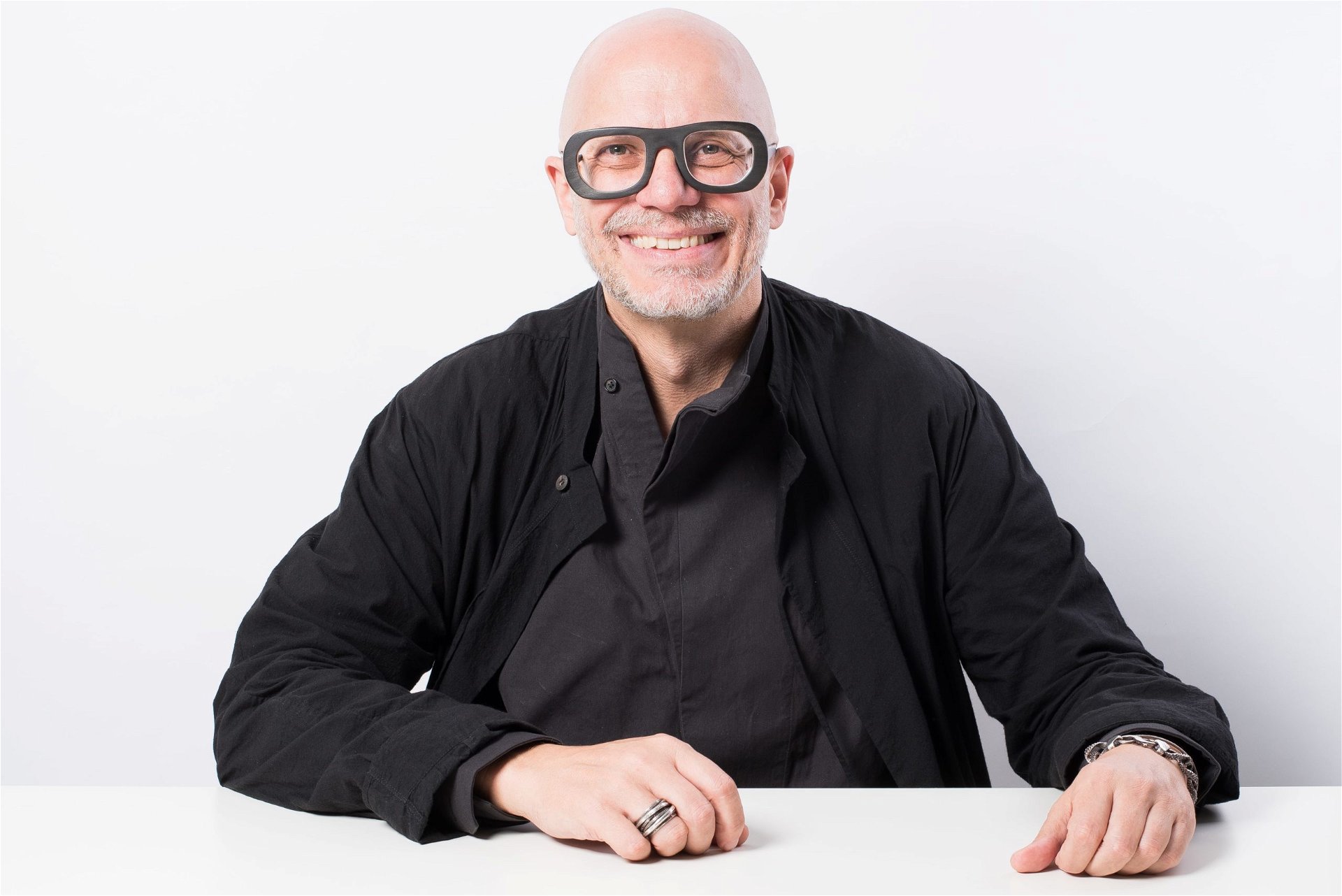
“I’m a maximalist. I love the concept of textures, collages, and layering!“
– Peter Ippolito, Managing Partner, Ippolito Fleitz Group
Identity Architects: The Collage Approach and Peter’s Fearless Vision
Peter and Gunter have established themselves as Identity Architects, a niche that goes beyond the obvious and into the spaces and connections in between. This concept is rooted in Peter’s diverse heritage, influenced by his Italian Catholic father and German Protestant mother. Growing up between cultures has nurtured his appreciation for transitional moments, where he discerns endless potential.
He elaborates, “It’s akin to having a Piece A and a Piece B, and you as a user are the bridge connecting the two. So one could say I possess the virtues of a German designer, which are quality, adherence to timelines, and budget management, while simultaneously indulging in design reflects my Catholic roots.”
Der Spiegel Canteen: One of Ippolito Flietz Group’s Key Projects
AI in Architecture: Has Ippolito Fleitz Group Tried Midjourney Yet?
“Certainly,” he responds with a smile. “We’re all using Midjourney as an experimental tool, a way to explore and test concepts without burdening multiple team members with detailed drawings. It’s not the final solution, but it provides a quick reference model for understanding where a specific strategy could lead us. Also, the ability to generate visually compelling graphics effectively conveys a space’s essence. In the long run, I see massive potential in it.”
AI can optimise various design aspects, from facades to carbon footprint analysis, allowing architects to make informed decisions beyond aesthetics. It’s particularly valuable for projects with repetitive and logical components, like setting parameters for daylight and MEP systems in massive projects such as those in Saudi Arabia, where the sheer scale is daunting. “I mean who would want to draw floor plans for The Line?” he laughs.
Peter Ippolito at the upcoming Beiersdorf Headquarters; Photography credits: Isadora Tast
However, Peter also acknowledges the associated risks with AI, including the danger of standardisation and its reliance on existing internet data, potentially limiting creativity and innovation. The digital experience has transformed the architectural landscape for the younger generation, diminishing the art of imagination and abstraction from 2D to 3D. The fading ability to recognise and appreciate the intelligence behind a good floor plan is concerning.
In his conclusion, Peter stresses the evolving nature of the design profession, explaining that designers now recognise that the process of reaching a design result or finished product is just as important as the result itself and we must embrace this new reality.
Feature Image Courtesy: Marc Goodwin
Article info
Article:
Date added:
26 September, 2023

